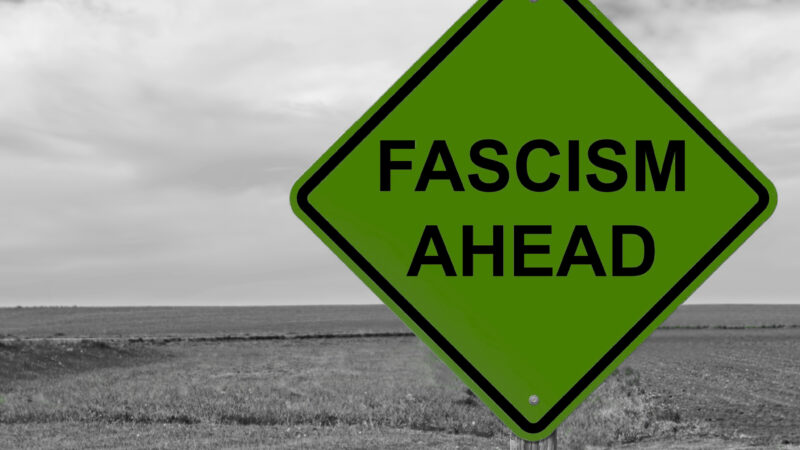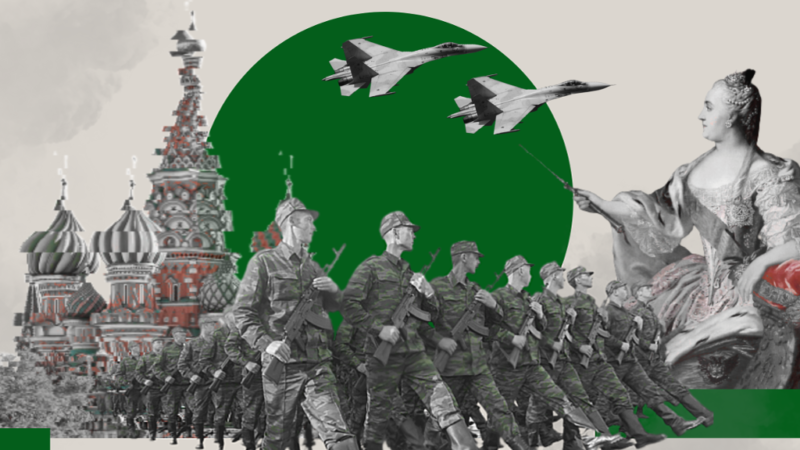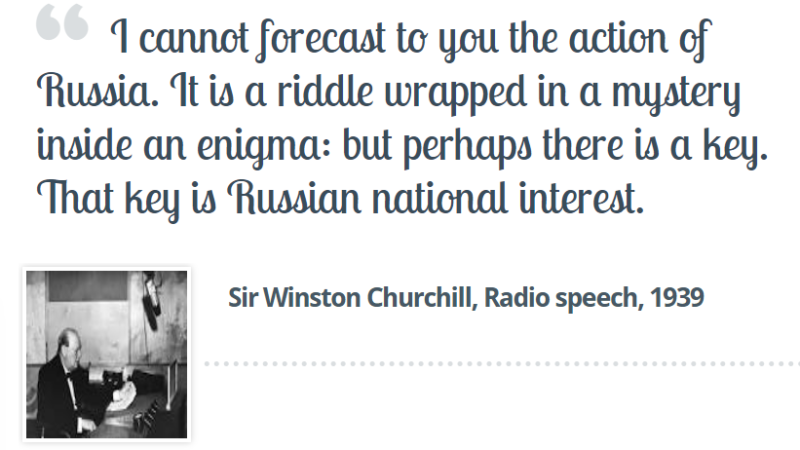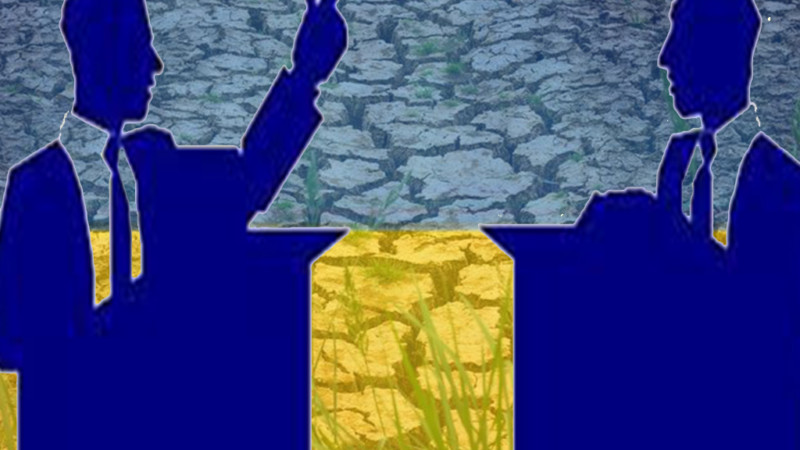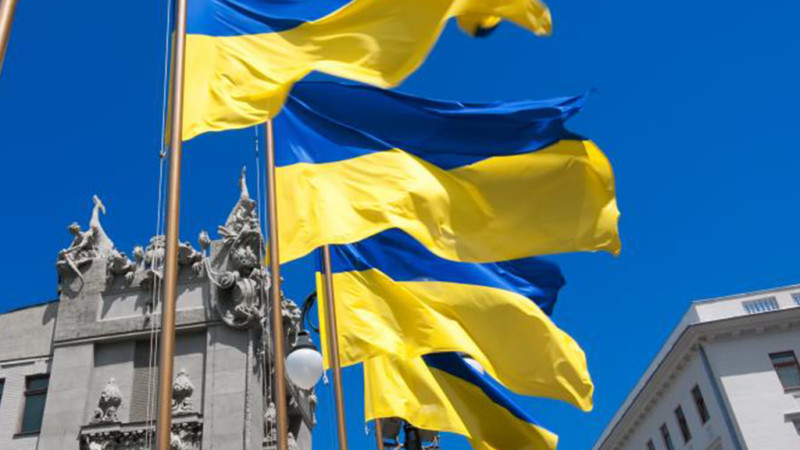The Study of Ukrainian Nationalism at the University of Ottawa
In October of this year, Ivan Katchanovski who is based at the School of Political Studies at the University of Ottawa presented a paper to the Chair of Ukrainian Studies at his university and a second paper at the conference “Negotiating Borders: Comparing the Experience of Crimea, Europe and Ukraine” that was organized by the Canadian Institute of Ukrainian Studies at the University of Alberta. The two papers have generated controversy because they are revisionist and have little in common with academic scholarship.
Exaggerating Support for Separatism in Ukraine
Katchanovski’s paper on separatism in eastern and southern Ukraine draws on his own questions included in the spring Kyiv International Institute of Sociology (KIIS), rather than a separate survey; but as with many statistics, the devil is in the details. Thus, for example, Katchanovski alleges that the majority of Donbas inhabitants (54-61 per cent) supposedly support separatism, which figure is far higher than the 30 percent given by KIIS senior sociologist Volodymr Paniotto (Tserkalo Tyzhnya, 27 June). Katchanovski’s claim of such high support is based on adding the 31 per cent who responded in favor of secession in order to join another country or to form an independent state with the 23 per cent of respondents who favored autonomy within a federal Ukraine.
While it is certainly true that residents of the Donbas (31 per cent) have expressed higher levels of support for separatism than residents in the remainder of eastern (5 per cent) and southern (3 per cent) Ukraine, it is quite obviously methodologically wrong to claim that a majority of the Donbas “backed different forms of “separatism.” To highlight this point, we need only remind ourselves that in Scotland’s recent referendum, a majority voted against separation (i.e., for an independent state) but at the same time voted in favor of autonomy (i.e. a Scottish parliament, etc.,) within the UK. Scottish autonomists would, thus, be very surprised to hear that, according to Katchanovski’s flawed methodology, they are in fact “separatists.”
Following in Russia’s Footsteps by Blaming the Euromaidan
Katchanovski’s two papers blame the emergence of violent separatism in eastern Ukraine on what he describes as the violent overthrow of President Viktor Yanukovych that—as he claims controversially—followed “part of the Euromaidan” and the “far right” purportedly having undertaken “mass killing of the police and protesters.” Katchanovski alleges that Euromaidan “shooters” and “spotters” were based in twelve buildings occupied by Euromaidan supporters. These, he claims, included Hotel Ukrayina on Instytutska Street (now renamed Heroes of the Heavenly Hundred).
This is the same hotel in which foreign journalists lived and that they frequently used because the front of the hotel looks out onto the Maidan that was used as a backdrop for many interviews (including with this author). During the murder of protesters on 20 February, this hotel was also featured in many BBC and other reports as killed and wounded bodies were carried in and laid on the floor of its reception area. One of the first victims to allegedly be shot by Euromaidan “shooters,” according to Katchanovski, was Lviv Ukrainian Catholic University Professor Bohdan Solchanyk.
Hotel Ukryaina is a large, former Soviet hotel, and it would simply have been impossible for the Euromaidan to have controlled the entire building (as Katchanovski alleges) during a period of chaotic violence and protests. At the same time, it is difficult to believe that supposed Euromaidan “shooters” could have used weapons in the hotel without any foreign journalists noticing and reporting upon this.
Another building in which Katchanovski claims Euromaidan and far right “shooters” were allegedly based is on Museyni Provulok, which is just off of European Square and begins where the monument to dissident and Rukh leader Vyacheslav Chornovil stands. Photograph no. 3 that appears in Katchanovski’s paper as alleged proof of his claims is extremely blurry and as such cannot credibly be relied upon as “evidence” of anything. (To remind, the first protesters were murdered by snipers stationed on the roofs of buildings on Museyni Provulok on January 20 after violence had erupted following the passage five days earlier of the so-called dictatorship laws.)
Flawed Methodology and Research
Katchanovski never attempts to lay out his research and thus never allows readers and external reviewers to judge for themselves whether his arguments and his alleged evidence have merit. He also apparently ignores readily available evidence that is instructive. This approach leads to the following kinds of examples. First, for some mysterious reason in neither of Katchanovski’s papers does he cite the numerous human rights reports produced by, for example, the UN, Council of Europe, OSCE, Amnesty International and Human Rights Watch, all of which lay blame primarily on Russia and separatists for crimes against humanity committed in the Donbas and Crimea. Second, he downplays the number of foreign mercenaries who joined the separatists while at the same time exaggerating the number of foreigners who have allegedly joined Ukrainian security forces. Third, while using the more neutral term “separatists” for the pro-Russian fighters, he refers to National Guard volunteers in more pejorative terms such as “special police battalions” and singles out the example of the Azov battalion (that was formed by the Social National Party). Meanwhile, Katchanovski ignores the fifty or more other volunteer battalions who have no similar insignia. Azov battalion commander Andriy Biletsky was elected to parliament in Prime Minister Arseniy Yatseniuk’s Popular Front that obviously cannot be defined as any “far-right” political force.
Сritical Reception
Condemnations of Katchanovski’s writings have been widespread. The University of Alberta historian David Marples has expressed the view that Katchanovski’s paper on the snipers “appears politically driven” and is a “veritable jumble of illogical reasoning and statements that do not seem warranted by the findings, which are themselves confusing….” Marples described the paper – as did other critical commentators at the University of Alberta conference – as a “political tract”.
Edmonton lawyer and community activist Ihor Broda pointed out at the University of Alberta conference that Katchanovski “is not a forensic specialist, nor does he claim a great knowledge of physics. Those who were shot on the Maidan were quickly removed to the hospital if injured, or laid together if they were dead. It would be impossible to determine precisely where each dead person was at the time they were shot and where the bullet originated. Yet, Katchanovski suggests he can do so retroactively. Forensic science calculates bullet trajectories and the location of corpses, and blood spatter evidence provides other forms of evidence. He maintains that he did an independent investigation in these areas but he is not qualified to do so.”
A paper or presentation cannot be considered to be scholarly or academic if its author pre-selects the conclusion he/she wishes to advance in order to fit some political agenda and then marshals supposed evidence in support. Katchanovski’s two paper’s are, thus, much more akin to polemical writing. This may probably explain why in his paper he seems to think that he needs to try and convince his reader not once but thrice that the paper is “academic.” Whether a paper is indeed “academic” or not is decided upon by readers and reviewers – not by the author’s own declarations.
Katchanovski Driven by Hostility to Ukrainian Nationalism
Unfortunately, Katchanovski’s political agenda has been extensively pursued in the majority of his publications, which agenda exhibits an acute hostility to any and all forms of Ukrainian nationalism whether in the past or the present. This attitude can be both petty and illogical, as seen in the following three examples. First, he refers in one of his two conference papers to the greeting ‘Slava Ukrayiny (Glory be to Ukraine)’ in a negative way because the Organization of Ukrainian Nationalists and the Ukrainian Insurgent Army (which Katchanovski wrongly conflates as “OUN-UPA”) used it in the 1930s and 1940s. Katchanovski implies that because this greeting was used on the Euromaidan, it allegedly showed the strong negative influence of the “far-right.” Second, Katchanovski compares the alleged cover up of Euromaidan and “far-right” “shooters” to what took place in Odessa in May when 42 pro-Russian activists died in a fire. Third, he ties the alleged cover-up of Euromaidan and “far-right” “shooters” to misrepresentations about OUN and UPA in the “mass killings of Poles and the Nazi-led mass murder of Jews’ in World War II.”
I visited Odessa in October to conduct academic research for a book I am writing on eastern Ukraine, and I investigated the tragic deaths of pro-Ukrainian and pro-Russian protesters. Katchanovski’s views of the Odessa deaths dovetail completely with Russia’s, and they both ignore the most important detail relating to this incident: namely, that unarmed, pro-Ukrainian protesters marching peacefully in Odessa were shot by pro-Russian supporters from behind police lines thereby killing a number of pro-Ukrainians. This fact is clearly visible on video footage.
https://www.youtube.com/watch?v=ZGCIeKKkU-k
https://www.youtube.com/watch?v=YCnAAthU4A8
Vitaly Budko, a pro-Russian activist known as “Botsman” is visible in still other footage shooting at pro-Ukrainian activists .
It was only after these killings of pro-Ukrainian activists that the situation on the ground in Odessa escalated into the tragic fire in the Trade Union building that killed pro-Russian protesters.
Perhaps it should not come as a surprise that Katchanovski ignores a chronological account of the Odessa events provided in a June report from the UN Human Rights Monitoring Mission in Ukraine . This report points to a group of pro-Russian activists who initially provoked the violence in the afternoon and reports that the first person killed was a pro-Ukrainian unity activist. Kharkiv Human Rights Protection Group expert Halya Coynash points out that, “this is largely ignored by the Russian ‘massacre’ lobby’ (including Katchanovski) but pivotal to all investigations”. But, Katchanovski’s sympathies are only with the pro-Russian protesters who died.
Pro-Russian Agenda and Bias
Katchanovski’s political agenda prompts him to try and “prove” that the snipers in the Euromaidan were primarily from the Euromaidan protesters and “far right.” One of the first questions that springs to mind is, why has only Katchanovski been able to find purported supporting evidence if it truly is “publicly available, but unreported, suppressed, or misrepresented.” As Marples too has pointed out, the photos used in Katchanovski’s paper are from videos and, therefore, are very blurry. This makes it practically impossible to see snipers, never mind ascertain who they were. There certainly could have been some protesters with guns, although in all of the videos and photos that I have collected, there are only a handful of armed people and these are standing among protesters on the streets – not “shooters” firing from roofs and hotel windows.
Alternative Hypotheses Ignored
There are various additional explanatory hypotheses for the shootings that Katchanovski never even considers, such as the chaos that results during pitched battles or the collateral damage that results from the actions of different police, Security Service (SBU) units and vigilantes (some of whom had ties to organized crime) involving weapons. Also, the possibility of Russian actors is for some reason never even entertained by Katchanovski. Ukayinska Pravda journalist Serhiy Leshchenko in his new book titled “Mezhyhirya Syndrome” about Yanukovych’s presidency investigates the influence and involvement of President Vladimir Putin and Russian intelligence operatives in Ukraine. Even Putin has admitted that his forces assisted in Yanukovych’s fleeing from Ukraine.
A Western journalist in Kyiv that I interviewed (who desired to remain anonymous) heard from a number of sources that some of the snipers were from Russia. “One source from the presidential administration told me several times in December through February that Yanukovych had brought in mercenaries from Russia and had them based somewhere in central Kyiv, adding that it was not sure what the arrangement was and whether Putin had a direct role in providing them, but it was clear they were ready to shoot at the protestors if needed.” The role of “The Family” was also a factor in the snipers’ activities and later in the violence in the Donbas: “After the sniper shootings took place, this source said he heard from good sources that Yanukovych’s elder son gave the de facto orders to shoot. A second oligarch source said Yanukovych’s eldest son ‘Sasha’ gave the orders to shoot as he was sitting in the situation room.” On leaked intercepts of police radio traffic the words “Sasha, Sasha” are audible. The Western journalist investigating law enforcement officers asked who the snipers in black were, and the Interior Ministry and SBU claimed they were not their men and that they didn’t know who they were.’
A genuinely “academic” paper would have tried to objectively analyze and present these different scenarios and then in his conclusions provide and explain what the author took to be the most likely scenario. Katchanovski instead seems to proceed in the opposite direction insofar as his paper on the massacre caused by snipers appears to have reached a foregone conclusion that is politically driven.
Poor Academic Knowledge and Conspiracy Theories
Still other elements of his paper also do not stand up to scrutiny as reflected in the following three examples. First, Katchanovski criticizes the prosecutor-general’s office for not investigating the murders in a thorough manner. But as is well known, this office is over-manned, incompetent and corrupt, and it has never been able to investigate high-level crimes such as the murder of journalist Georgi Gongadze in 2000 or presidential candidate Viktor Yushchenko’s poisoning in 2004. Why should the Euromaidan murders be any different? Second, Katchanovski makes a rather unusual claim for anybody studying Ukraine that there is no written order by Yanukovych ordering the killings. But, as is also well known, such tactics were the norm in the USSR and continue in Ukraine with “telefone pravo” (telephone law, or orders given over the telephone). Orders, and especially controversial orders, are not written down in societies without the rule of law. It is, therefore, not surprising that there is no written order as to who sent police special forces to repress the Orange Revolution on 28 November 2004; there is no documentary evidence to prove who gave the orders to conduct massive election fraud in that year’s election; and there are no documents to show who gave the order to poison former president Yushchenko.
Third, a conspiracy mindset was very deeply ingrained in the former USSR and in post-Soviet Russia and Ukraine where cover-ups, poor investigations and concealed evidence are pointed to as evidence of the existence of conspiracies. Katchanovski’s paper on the snipers massacre follows in this pattern. The conspiracy mindset is heavily prevalent in eastern Ukrainian and in Russian political culture such that Yanukovych, the Party of Regions, the Communist Party and Russian politicians believe that the Georgian Rose and Ukrainian Orange Revolutions as well as the Euromaidan were the supposed product of Western backed putschs.
That Katchanovski’s paper on the snipers massacre is politically driven may be seen in his conclusion when he provides what Marples believes is an argument “that appears to fall closely into line with the RT version of events disseminated in the Russian Federation.” Katchanovski claims the murders of protesters “represented a violent overthrow of the government in Ukraine and a major human rights crime” committed by “elements” of the Euromaidan and “far-right.” His position ignores the crucial detail that the far right did not come to power after the Euromaidan came to power, and that they lost two pre-term elections in May and October 2014. More importantly, Yanukovych had been preparing to flee throughout the third week of February as can be seen in the security camera videos at his Mezhyhirya palace that he left behind. His flight from Kyiv was, therefore, not in response to a threat expressed by Euromaidan activist Volodymyr Parasiuk from the Maydan stage—who, incidentally, was not a member of Pravyy Sektor. Katchanovski (like Russian statements and propaganda) ignores three other important factors: (1) Yanukovych was impeached by a vote of 328 to zero by parliament: (2) the Party of Regions condemned Yanukovych; and (3) Yatseniuk was appointed prime minister by a vote of 374 to 1.
As these facts demonstrate beyond any doubt, nobody “seized” power, and the Euromaidan was not an illegal “putsch.” If a Ukrainian president dies or is incapacitated, there is provision in the constitution for the parliamentary chairman to become “acting president” until new elections are held. There is, however, no constitutional provision for what action should be taken if the president abandons his job!
University of Ottawa’s Portrayal of Nationalism’s in Ukraine
The Chair of Ukrainian Studies at the University of Ottawa was launched a decade ago with the initial funding coming from Mychailo and Oksana Sosnovsky who, Oksana Bashuk-Hepburn has said, were “a couple who made the contribution with the view that the gap of knowledge regarding Ukraine’s struggle for independence, sovereignty and territorial integrity would be addressed.” Attacks on Ukrainian nationalism at the University of Ottawa is, she adds “a perversity of their generosity.”
The Chair of Ukrainian Studies at Ottawa organizes an annual conference on contemporary Ukrainian topics that is funded by the George W. Danyliw Foundation. This foundation has funded various activities with which I am personally familiar, such as the teaching on contemporary Ukraine at the University of Toronto (begun by me in 2002 and continued by others), the publication of a book that I authored on the Crimea that was published in 2007 as well as other academic projects. The book on the Crimea was a personal request made by George W. Danyliw—who was one of the main fundraisers for the Chair of Ukrainian Studies at the University of Toronto—and Professor Peter J. Potichnyj intended to counter Russian claims to the region. The project was therefore truly visionary in the light of Russia’s recent annexation of the Crimea.
In North America, chairs in Ukrainian studies at Harvard and Toronto Universities have traditionally focused on history, language and culture as has until recently the Canadian Institute of Ukrainian Studies (CIUS). The University of Ottawa’s seminar on contemporary Ukraine thus plays a unique role in the constellation of Ukrainian studies, and it is therefore important to get it right. Unfortunately, as one longtime observer of the Ottawa Chair of Ukrainian Studies told me, “In my experience, at the University of Ottawa conferences the organisers appear to have bent over backwards to accommodate anti-Ukrainian positions even though discredited and in a minority.”
The annual conference at Ottawa has become a vehicle for providing an academic fig leaf to ideologically driven attacks on “Ukrainian nationalism” in the writings of individuals such as Katchanovski, John Paul-Himka, Pers Anders Rudling, Anton Shekhovtsov and, to a lesser extent, Andreas Umland, all of whom have been frequently invited speakers.
The University of Ottawa’s Chair of Ukrainian Studies annual conference on contemporary Ukraine has repeatedly ignored paper proposals that seek to broaden research to different types of nationalisms found in Ukraine. There has been an over-focus on Svoboda, Pravyy Sektor and western Ukrainian nationalism that serves to deepen biases by portraying racism, anti-Semitism, anti-gay sentiments and violence as linked to one side (Svoboda, Pravyy Sektor, and western Ukrainians). Meanwhile, the kind of far more violent and criminal Russian and Soviet nationalisms in the Donbas, Crimea and elsewhere in Ukraine that have led to the deaths of over 10, 000 civilians, Ukrainian soldiers, separatists and Russian soldiers and that have resulted in over one million people having been forced to leave their homes is usually altogether ignored.
Internationally well-known expert on crime in the former USSR Mark Galeotti wrote recently ‘Crime, especially organized crime, has been at the heart of the events in Ukraine from the start’ . Unfortunately, those attending the University of Ottawa’s Chair of Ukrainian Studies seminar on Ukrainian politics would never hear that organized crime has any role to play in the Donetsk clan, Party of Regions, and Donbas separatism.
As a general proposition, the Party of Regions, its ties to criminality and the Donbas separatists, and Russian nationalism in Ukraine are altogether under-researched in North American and European academic circles. It is, thus, truly paradoxical—given, on the one hand, the huge import of these phenomena for current affairs in Ukraine and, on the other hand, their being almost ignored in academe—to find that these factors and issues are also ignored at the annual Chair of Ukrainian Studies conference, whose very focus is supposed to be on contemporary developments in Ukraine. Meanwhile, well-known scholars on Ukrainian nationalism and the Party of Regions appear to have been blacklisted from giving papers.
Intolerance is usually found on the extreme left and right but can also be found among academics who are traditionally assumed to hold liberal views. This is clearly seen in how conference subjects and speakers are carefully screened by the Char of Ukrainian Studies at the University of Ottawa to ensure one-sided discussions on Ukrainian nationalism while ignoring other forms of extremism and more violent nationalisms in Ukraine. And it is particularly surprising why the University of Ottawa provides academic credibility to a person such as Kachanovski who has a pro-Russian political agenda that whose purported analyses have nothing in common with academic scholarship.
Dr. Taras Kuzio is a Research Associate at the Canadian Institute for Ukrainian Studies, University of Alberta and a Non-Resident Fellow, Center for Transatlantic Relations, School of Advanced International Relations, Johns Hopkins University
